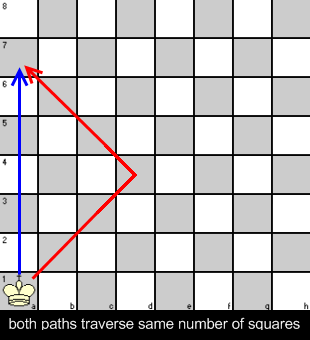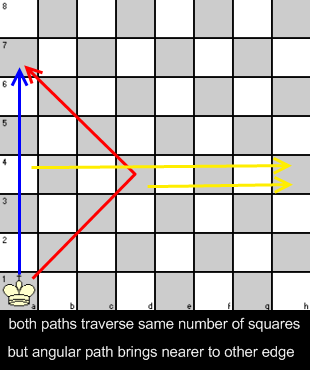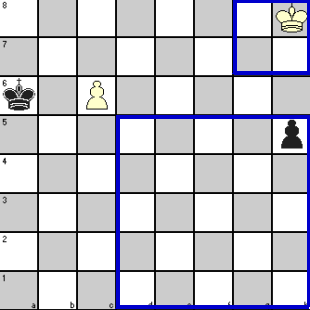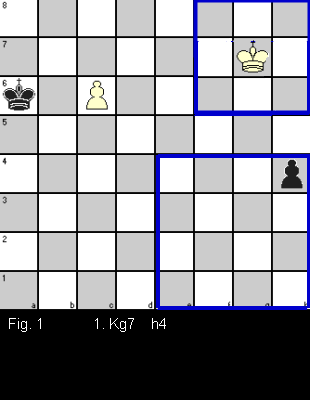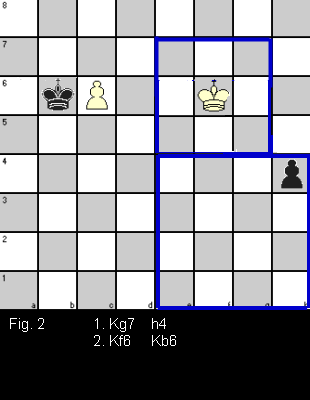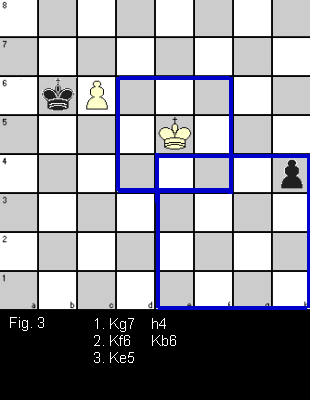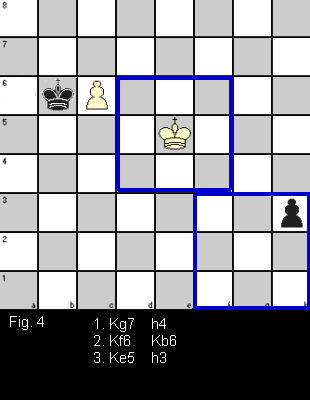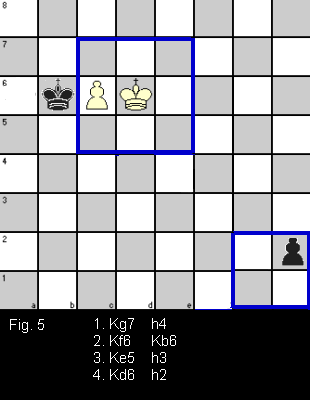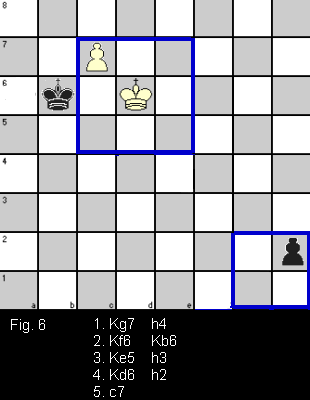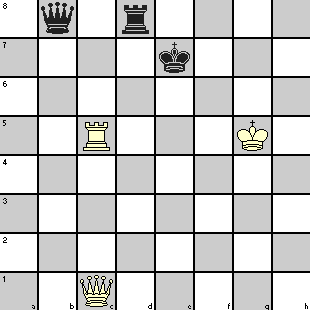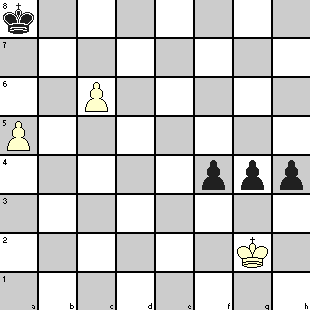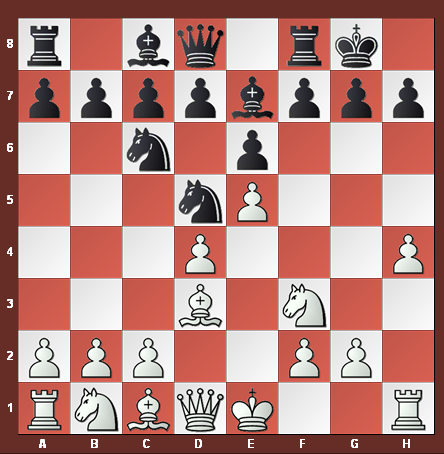The theory behind all chess openings is to control the center comprising the squares d4, e4, d5 and e5, and the development of pieces that goes with it. Control of the center by one player helps him to position his pieces more effectively while thwarting the development of opponent’s pieces. You can easily imagine that such a control with its associated benefits can facilitate your win to a great extent.
This control can be achieved in three ways:
- Firstly, by occupying those squares with your pawns and pieces.
- Secondly, allowing your opponent to occupy the center and then attacking and undermining the position.
- Lastly, exerting control from a distance by means of pieces like Knights and Bishops without directly occupying those center squares.
This control of a square is also known as ‘applying pressure’ on the square by threatening to capture any enemy pawn or piece that may venture to occupy the square.
In Chess Openings: the most popular ones, we tried to show you the most common first moves at the start of a chess game. But you must have noticed that the baker’s dozen of most popular types can ultimately lead to hundreds of different openings, going by the ECO codes that incorporate those opening moves. If you examine any of these openings through the moves that follow, the theme of center control will become apparent by the use of one of the three opening tactics described above.
To see how the different chess openings aim to achieve center control and their pros and cons, let us check four types which are related to the most frequent first moves described in Chess Openings: the most popular ones. Incidentally, two of these openings start with pushing the KP (1. e4) and the other two with QP (1. d4), so a fair representation is made!
We will examine with reference to the following openings:
1. e4-c5 (Sicilian Defense)
2. e4-e5 (Ruy Lopez)
3. d4-Nf6 (Nimzo-Indian Defense)
4. d4-d5 (QGD or Queen’s Gambit Declined)
However, since Ruy Lopez has been discussed earlier in Chess Opening basics: Ruy Lopez, we will examine the other three in this and the next article.
Sicilian Defense:
It has become the most popular choice at master level as it eminently suits a fighting player with Black pieces. As can be seen from the number of ECO codes, there are many variations possible, but here we will consider the Najdorf variation which has become very popular with players like Fischer and Kasparov going for it in a big way.
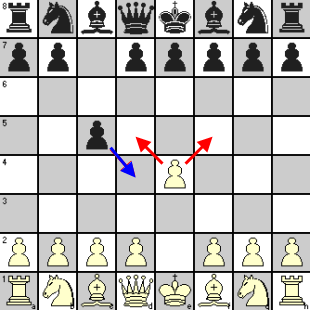 |
||||
| 1. | e4 | c5 | White wants to control the central square d5. Black in turn applies pressure on d4 against advance of White’s QP. |
|
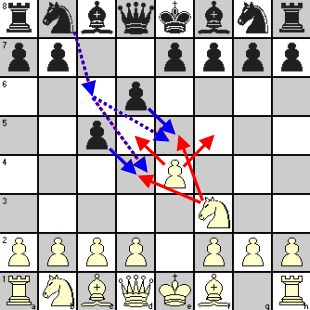 |
||||
| 2. | Nf3 | d6 | White creates his own pressure on d4 and also on e5. Black’s pawn move opposes this pressure on e5. Here, Black could also play Nc6 which would counter the White KN’s influence. Retaining a control on d5 is a key theme for Black in Sicilian defense in order to free his position by moving his QP to d5. |
|
| 3. | d4 | cxd4 | White does not want to lose initiative, so goes ahead with his QP advance and Black immediately captures the pawn to deny White the hold on the center squares. |
|
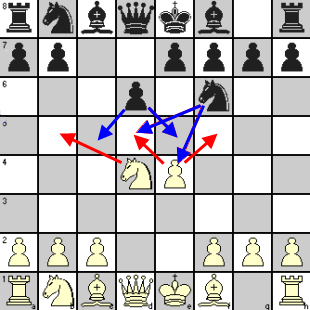 |
||||
| 4. | Nxd4 | Nf6 | White recaptures and positions his KN on a center square. White gets control of half-open d-file while Black gets half-open c-file as also a pawn majority at center. Black now develops his KN threatening White’s KP and exerting pressure on d5. |
|
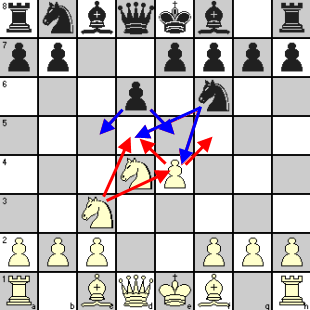 |
||||
| 5. | Nc3 | White counters Black’s plans by bringing out his QN which gives support to his e4 pawn and bolsters his hold on d5. |
||
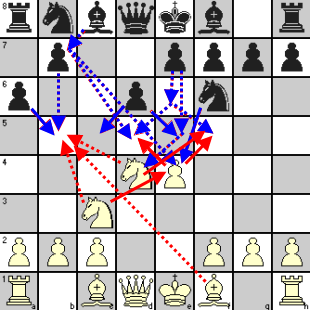 |
||||
| 5. | … | a6 | ||
For the first time, Black seems to have deviated from the struggle for the center through this defining move for Najdorf variation of Sicilian Defense. What is the idea behind this apparent deviation?
By this move, Black denies b5 square to White‘s Knights and KB. It also prepares for Black’s pawn move to b5 to start a Queenside action and positioning his QB to b7 from where it can bring pressure on d5 square and White’s e4 pawn.
After this, White may generally choose from the sharpest line with 6. Bg5 to quieter, positional games with 6. Be2, and others lying in between like 6. Be3, 6. f3, and 6. Bc4. But further analysis of all those moves will take us into a full discussion of Sicilian Defense, which was not the idea behind this article. We only wanted to show how any opening theory tries to achieve center control and if you understand the means and follow the principles, you will be in the right lines without a need to memorize too many moves!
In next two parts of Chess Opening: Control of Center, we will see how this is achieved in two popular QP openings viz. Nimzo-Indian Defense and Queen’s Gambit Declined.
